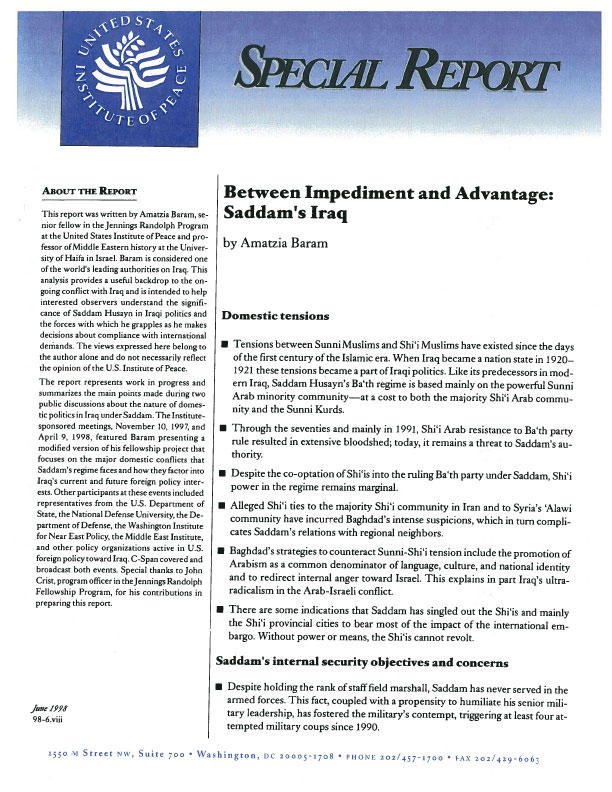The report represents work in progress and summarizes the main points made during two public discussions about the nature of domestic politics in Iraq under Saddam. This analysis provides a useful backdrop to the ongoing conflict with Iraq and is intended to help interested observers understand the significance of Saddam Hussain in Iraqi politics and the forces with which he grapples as he makes decisions about compliance with international demands.

About the Report
This report was written by Amatzia Baram, senior fellow in the Jennings Randolph Program at the United States Institute of Peace and professor of Middle Eastern history at the University of Haifa in Israel. Baram is considered one of the world's leading authorities on Iraq. This analysis provides a useful backdrop to the ongoing conflict with Iraq and is intended to help interested observers understand the significance of Saddam Hussain in Iraqi politics and the forces with which he grapples as he makes decisions about compliance with international demands.
The report represents work in progress and summarizes the main points made during two public discussions about the nature of domestic politics in Iraq under Saddam. The Institute-sponsored meetings, November 10, 1997, and April 9, 1998, featured Baram presenting a modified version of his fellowship project that focuses on the major domestic conflicts that Saddam's regime faces and how they factor into Iraq's current and future foreign policy interests. Other participants at these events included representatives from the U.S. Department of State, the National Defense University, the Department of Defense, the Washington Institute for Near East Policy, the Middle East Institute, and other policy organizations active in U.S. foreign policy toward Iraq. C-Span covered and broadcast both events. Special thanks to John Crist, program officer in the Jennings Randolph Fellowship Program, for his contributions in preparing this report.
The views expressed here belong to the author alone and do not necessarily reflect the opinion of the U.S. Institute of Peace.